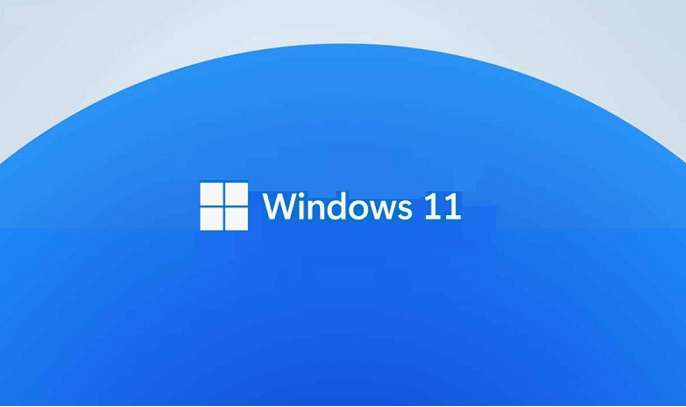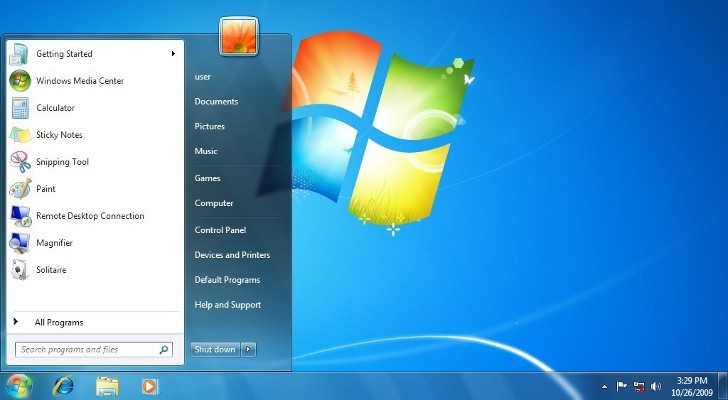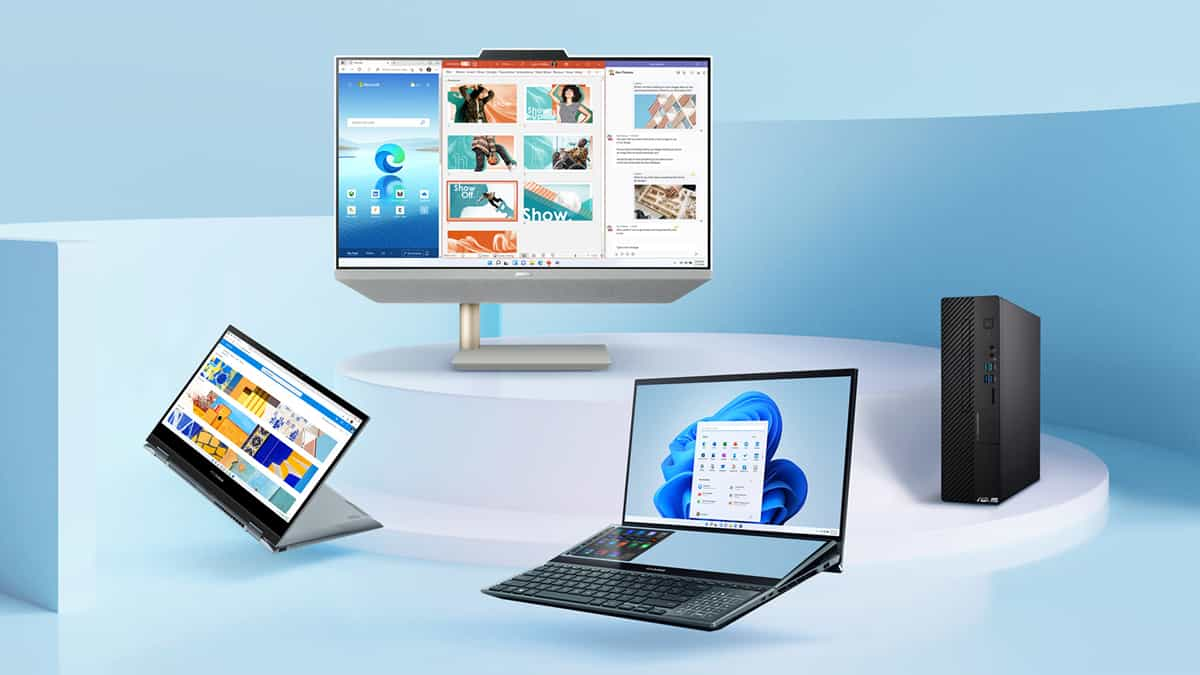If your existing Windows 10 PC is running Windows 10 20H1 or later and meets the minimum hardware specificationsit will be able to upgrade to Windows 11. The upgrade rollout plan is still being finalized, but for most devices already in use today, we expect it to be ready sometime in early 2022. Not all Windows 10 PCs that are eligible to upgrade will be offered to upgrade at the same time. To see if your PC is eligible to upgrade, refer to our knowledge base for a list of tested systems. Once the upgrade rollout has started, you can check if it is ready for your device by going to Settings/Windows Updates. Similar to how end users are notified when updates are available in Windows 10, end users will see an indication in the notification areas of the taskbar in the bottom right, that the upgrade is available.
More information on how that is presented will be available at a later date. Additional desktop notification options may be also be added at a later date. If your existing Windows 10 PC is running Windows 10 20H1 or later and meets the minimum hardware specifications it will be able to upgrade to Windows 11. To see if your PC is eligible to upgrade, refer to the specifications here. If your existing Windows 10 PC is running the most current version of Windows 10 and meets the minimum hardware specifications it will be able to upgrade to Windows 11.
Not all Windows 10 PCs that are eligible to upgrade to Windows 11 will be offered to upgrade at the same time. Warren noted that he rarely used the Widgets panel or Microsoft Teams, citing that he preferred the weather display that later versions of Windows 10 offered, and didn't use Teams to communicate with his friends and family. He also acknowledged the expansion of Microsoft Store to include more "traditional" desktop applications. Overall, he concluded that "I wouldn't rush out to upgrade to Windows 11, but I also wouldn't avoid it. After all, Windows 11 still feels familiar and underneath all the UI changes, it's the same Windows we've had for decades." Cunningham concluded that "as I've dug into and learned its ins and outs for this review, I've warmed to it more", but argued that the OS was facing similar "public perception" issues to Windows Vista and Windows 8. Most Windows 10 PCs currently being sold will be able to upgrade to New Windows.
For the PC to be able to upgrade to New Windows, it must meet the minimum hardware specifications and specific hardware is required for some features found here. The upgrade rollout plan is still being finalised but is scheduled to begin late in 2021 and continue into 2022. Microsoft commercially released Windows 11 on Oct. 4, and noted that it's a free upgrade for Windows 10 systems that meet the new operating system's minimum requirements.
Individuals with Windows 10 systems that pass Windows 11's stringent hardware requirements will be offered the new OS via the Windows Update mechanism. It'll replace the underlying Windows 10 bits with Windows 11 bits via an automated "in-place upgrade" approach. However, it's possible for users to decline the upgrade and continue with Windows 10. All HUAWEI PCs with Windows 10 currently being sold on HUAWEI Consumer BG website will be able to upgrade to Windows 11. For the PC to be able to upgrade to Windows 11, it must meet the minimum hardware specifications and specific hardware is required for some features.
The upgrade rollout plan is still being finalized but is scheduled to begin late in 2021 and continue into 2022. A redesigned user interface is present frequently throughout the operating system, building upon Fluent Design System; translucency, shadows, a new color palette, and rounded geometry are prevalent throughout the UI. A prevalent aspect of the design is an appearance known as "Mica", described as an "opaque, dynamic material that incorporates theme and desktop wallpaper to paint the background of long-lived windows such as apps and settings". Internet Explorer has been replaced by the Chromium-based Microsoft Edge as the default web browser, and Microsoft Teams is integrated into the Windows shell. Microsoft also announced plans to allow more flexibility in software that can be distributed via Microsoft Store, and to support Android apps on Windows 11 . All Dell PCs with Windows 10 currently being sold on dell.com will be able to upgrade to Windows 11.
Original equipment manufacturers can still ship computers without a TPM 2.0 coprocessor upon Microsoft's approval. Some third-party software may refuse to run on unsupported configurations of Windows 11. If the Microsoft Surface family of products isn't your style though, other brands like Dell, Asus and HP have all released pages online that specify what devices are Windows 11 ready. Note that many won't come with the new operating system installed, but as they all meet the minimum system requirements, you can simply buy the laptop or 2-in-1 as normal and then update it yourself. "Following the tremendous learnings from Windows 10, we want to make sure we're providing you with the best possible experience.
That means new eligible devices will be offered the upgrade first. Windows 11 has higher technical requirements than Windows 10, is possible to install Windows 11 on devices that don't meet the minimum requirements. Upgrading unsupported hardware to Windows 11 will require you to install the update manually using an ISO. There is a different set of minimum minimum requirements your PC will have to meet including 4GB of RAM, 64GB of storage space, and two-core 64-bit 1 GHz processor. With its machine learning technology, Microsoft has determined further devices on which the Windows 11 update prompt should now appear automatically. The Redmond-based software company has not revealed any additional information on which exact PC configurations are included in this third group.
Is Windows 11 Free To Upgrade However, manually triggering the Windows 11 update, which is how many tech enthusiasts probably installed Windows 11 in the past weeks, is no longer necessary on these PCs. Users can simply check the regular Windows Update application in order to verify whether the Windows 11 upgrade is ready to download on their respective device. On August 31, 2021, Microsoft announced that Windows 11 was to be released on October 5, 2021.
The release would be phased, with newer eligible devices to be offered the upgrade first. In October 2019, Microsoft announced "Windows 10X", a future edition of Windows 10 designed exclusively for dual-touchscreen devices such as the then-upcoming Surface Neo. Legacy Windows applications would also be required to run in "containers" to ensure performance and power optimization.
Microsoft stated that it planned to release Windows 10X devices by the end of 2020. To see if your PC is eligible to upgrade, refer to our supported computer lists. Citing security considerations, the system requirements for Windows 11 were increased over Windows 10. While the OS can be installed on unsupported processors, Microsoft does not guarantee the availability of updates. Windows 11 also drops support for 32-bit x86 CPUs and devices which use BIOS firmware. You can refer to our knowledge base for a list of tested systems to determine if your device eligible to upgrade to Windows -11.
Many PCs that are less than four years old will be able to upgrade to Windows 11. They must be running 20H1 or later version of Windows 10 and meet the minimum hardware requirements to receive the Windows 11 upgrade. Microsoft continues to test new features and improvements after Windows 11 was released. It only tests the latest version of Windows with members who participate in the Windows Insider Program in the Dev, Beta and Release Preview channels. The Beta and Release Preview channels offer admins and users a sneak peek at the end of the month of non-security updates that will arrive in the Patch Tuesday update, which falls on the second Tuesday of every month. The software company has claimed that Windows 11 will come with new features that have been made for business users, especially for those operating systems with external monitors.
For example, when users undock a machine to take a call in a quiet room and then when users dock the machine again, the OS will automatically adjust the apps to a single screen. Note that Windows 11 will only be a 64-bit release and won't come in a 32-bit flavor. That's fair since 32-bit PCs are not sold anymore anyway and 64-bit editions can run 32-bit applications just fine. Of course, Windows 11 supports System on a Chip which means Windows 10 on ARM devices will get the upgrade as long as they meet other criteria. The above screenshot makes it clear that Surface Pro X running Windows 10 on ARM is eligible for the Windows 11 upgrade. (Pocket-lint) - Windows 11 is now rolling out as a free upgrade for Windows 10 users.
That means you should be able to download and use Windows 11 right now - as long as your PC meets the minimum system requirements. The quickest way to get the latest version of Windows from Microsoft is to download the operating system update over the air for free, or you can go the more expensive route and buy a new Windows PC or laptop. Windows 11 will be provided as a free update to all eligible devices that are currently running Windows 10. Eligibility for automatic upgrade is based on certain minimum hardware requirements.
Windows 11 SE was announced on November 9, 2021, as an edition exclusively for low-end devices sold in the education market, and a successor to Windows 10 S. It is bundled with applications such as Microsoft Office for Microsoft 365, Minecraft Education Edition, and Flipgrid, while OneDrive is used to save files by default. Windows 11 SE does not include Microsoft Store; third-party software is provisioned or installed by administrators. As part of the minimum system requirements, Windows 11 only runs on devices with a Trusted Platform Module 2.0 security coprocessor. According to Microsoft, the TPM 2.0 coprocessor is a "critical building block" for protection against firmware and hardware attacks.
In addition, Microsoft now requires devices with Windows 11 to include virtualization-based security , hypervisor-protected code integrity , and Secure Boot built-in and enabled by default. The operating system also features hardware-enforced stack protection for supported Intel and AMD processors for protection against zero-day exploits. Upgrades to Windows 11 will begin to roll out late in 2021 and continue into 2022. During this time, we will be doing some behind the scenes testing and validating for your specific PC. Windows Update will provide an indication if and when your PC is eligible.
Talking about the new features given in Windows 11, the company has tried to make connectivity better than before. Many tools have been given to make multitasking easier and better in Windows 11. It has a special Snap layout which is designed for multitasking and with the help of this users can access multiple windows simultaneously on one screen.
Apart from this, the Snap group feature has been given where users will get a collection of apps which can be accessed from the taskbar. The company claims that such a feature is not present in any other OS. Microsoft has launched its much-awaited Windows 11 after six years in an online event. The company called Windows 11 'next-generation' of Windows due to an extensive change in its design as compared to its predecessor. Microsoft has finally officially unveiled its new Windows 11 with better organized features and new UI in the design of its next generation operating system in a big event on June 24. The company has updated centrally placed Start menu, upgraded widgets, and changed all-new boot screen and start-up sound.
Introduced in June, Windows 11 offers a sleeker look compared to its previous versions. New features include an update to layouts for snapping applications to the screen, more detailed widgets, a revamped Microsoft Store, and support for Android apps. The upgrade will then roll out over time to in-market devices based on intelligence models that consider hardware eligibility, reliability metrics, age of the device and other factors that impact the upgrade experience. Microsoft says new eligible devices will get the update first. After that, the update will then roll-out over time to in-market devices based on intelligence models that consider hardware eligibility, reliability metrics, age of device, and other factors that impact the upgrade experience. Perhaps the most important thing to know about the release of Windows 11 is that we should expect it to change significantly over the next few years.
I've been using beta versions of Windows 11 for a month in the lead-up to writing this review, and it seems like every few days there's a minor new feature or redesigned app to check out. We may not see that feature fully realized in Windows until next year. The Microsoft Store got a design upgrade, as well, and the company has promised more access for independent developers to create new tools for the operating system. The new version of Windows continues to offer a focus on desktop gaming, with features like DirectX12 Ultimate, DirectStorage and Auto HDR. Next, Microsoft says it will look at hardware eligibility, reliability metrics and other factors on existing Windows 10 devices to determine when to offer the latest OS through Windows Update. It's a similar approach to how the company has handled Windows 10 feature updates over the years.
You can find out whether your device is compatible using the PC Health Check app. The short answer is no, Microsoft isn't going to force anyone to upgrade to Windows 11. Starting with Windows 10 version 1903, the Redmond firm stopped forcing people to install feature updates. This came after a disastrous Windows 10 version 1809 that actually deleted some users' files. If you haven't seen it through Windows Update yet, you can still get the final build through the Beta and Release Preview channels of the Windows Insider Program, as long as you have a compatible PC.
The Dev channel is already running rs_prerelease builds to test out new features, so be careful with that. If you enroll in the Dev channel, you'll have to do a clean installation of Windows 11 to roll back. And of course, you can also get it on a bunch of new laptops and desktops like the Surface Laptop Studio and Surface Pro 8. Microsoft said the launch will be "phased and measured," with new eligible devices getting the upgrade first and the rest getting offered the free upgrade sometime between October and mid-2022.
Microsoft is making sure that those who purchase a new laptop prior to Windows 11 being pre-installed by manufacturers will be able to update first. There is a way to install Windows 11 on unsupported hardware, but we wouldn't recommend it. Although Microsoft hasn't confirmed it, the company has heavily implied that unsupported users won't receive critical security updates. If you still want to install, you can do so using the Media Creation Tool, which bypasses hardware checks. At least 16GB of RAM The basic system requirements of Windows 11 differ significantly from Windows 10. Windows 11 only supports 64-bit systems such as those using an x86-64 or ARM64 processor; IA-32 processors are no longer supported.
Thus, Windows 11 is the first ever consumer version of Windows not to support 32-bit processors and 16-bit software . The minimum RAM and storage requirements were also increased; Windows 11 now requires at least 4GB of RAM and 64GB of storage. The compatibility list includes the Intel Core i7-7820HQ, a seventh-generation processor used by the Surface Studio 2, although only on devices that shipped with DCH-based drivers.
Task View, a feature introduced in Windows 10, features a refreshed design, and supports giving separate wallpapers to each virtual desktop. When a display is disconnected in a multi-monitor configuration, the windows that were previously on that display will be minimized rather than automatically moved to the main display. If the same display is reconnected, the windows are restored to their prior location. Microsoft is rolling out the OS in phases, so your system might not prompt you to upgrade just yet -- in fact, you might not find it even if you tell your computer to check for updates.
An August blog post from Microsoft said the company expects "all eligible devices to be offered the free upgrade to Windows 11 by mid-2022." Don't want to wait another half a year? Read on to find out how the Windows 11 Installation Assistant is your shortcut to Windows 11. The company has put a lot of focus on the design of its new Windows. In the new Windows 11, a new start menu has been changed without live tiles. The start menu is different from before and icons have also been given in it.
This time the company has also added a recommended section in it. A new position has been given to the taskbar icon which has now been shifted to the centre. Along with this, Windows Hello has also been given a new look. I still think next version of windows will be better and I only care about what I can run on it so I don't care much about UIs and stuff like that like some people do and make drama about. A more notable new feature of Windows 11 is Snap Assist, which makes it easier to arrange open apps on your desktop into Layouts and Groups.
Like much of Windows 11, it's a more granular version of a Windows 10 feature —specifically, the way you can already "snap" windows into pre-configured layouts on Windows 10. There's been some confusion around what, precisely, all of this means for unsupported machines of late — as well, as, frankly, which machines qualify as supported. It was reported earlier this week that those systems that don't fall within Microsoft's parameters won't get Windows Update when the new operating system is installed manually. That's obviously a massive bummer, given that the utility delivers security patches and other updates. Much like the Windows 10 rollout, the Windows 11 release will be staggered with a vision to reach all devices by mid-2022.
This phased approach prioritises newer systems that are certified compatible, taking into account the age of your device, what hardware its packing, and other factors, meaning you might need to be patient if you're keen to upgrade. Windows 11 is fast approaching, as Microsoft confirms the operating system will start to become available on October 5, 2021. Windows 11 brings a refreshed user interface, better performance and security, and a variety of new features. Based on my initial experience using a review version of Windows 11 for the past two days, it's a solid upgrade with some nice benefits, but not a drop-everything-and-get-this update for Windows 10 users. Microsoft will let you know when Windows 11 is ready for your system via the Windows Update Settings page or when you check for updates. The company expects to offer the upgrade to all eligible Windows 10 devices by mid-2022.
Microsoft says the upgrade rollout plan is still being finalized, but for most devices already in use today, they expect it to be ready sometime in early 2022. When you check for updates in Windows Update, it simply tells you that a feature update is available if you want it, and you can opt into taking it. The only time Microsoft forces a Windows 10 feature update is if the one you're on is nearing the end of support, but that's not even going to happen with Windows 11. You'll need a PC that meets the minimum requirements to be supported on Windows 11. If you want to try out some workarounds for getting it installed on unsupported PCs, we've got a guide for that too.
























































